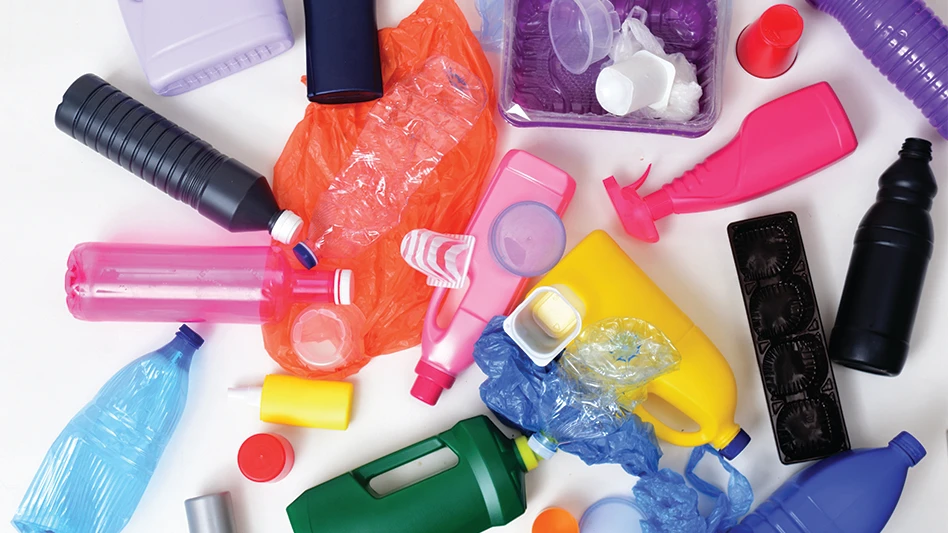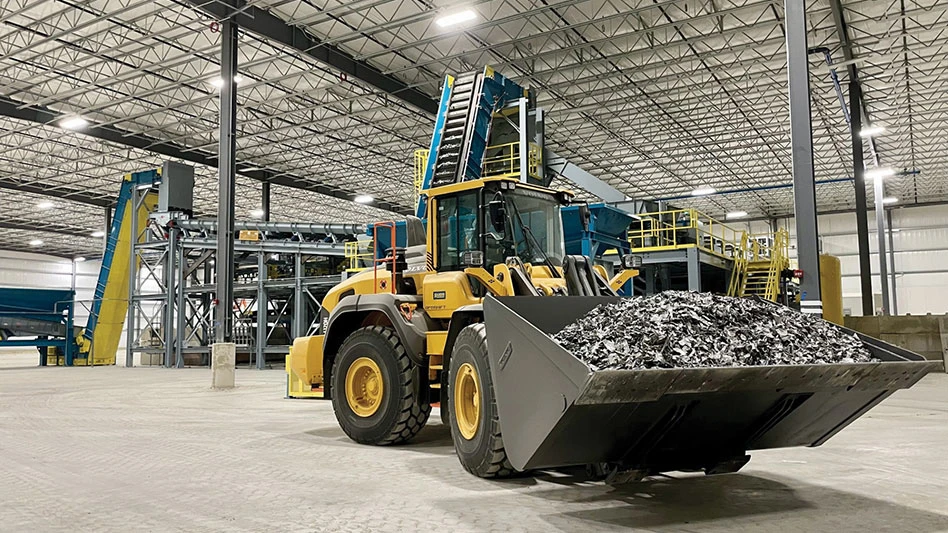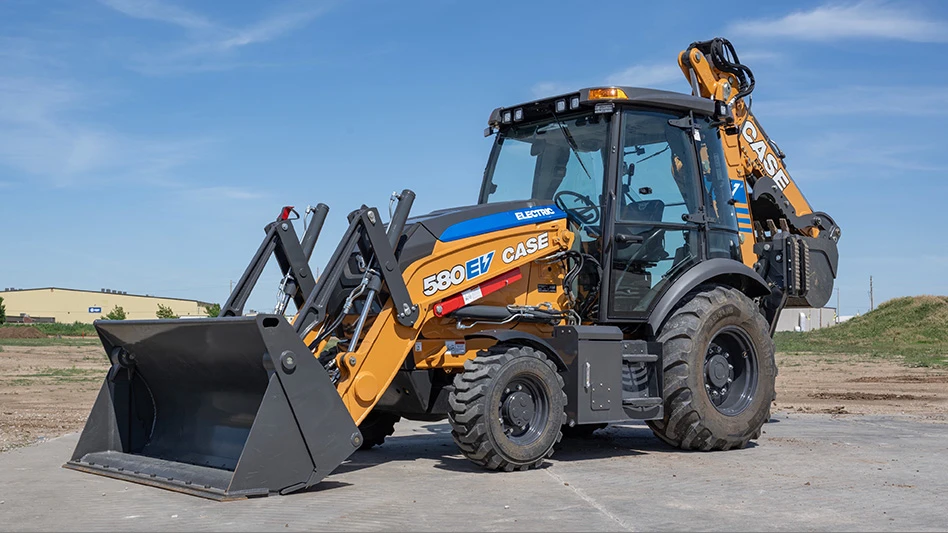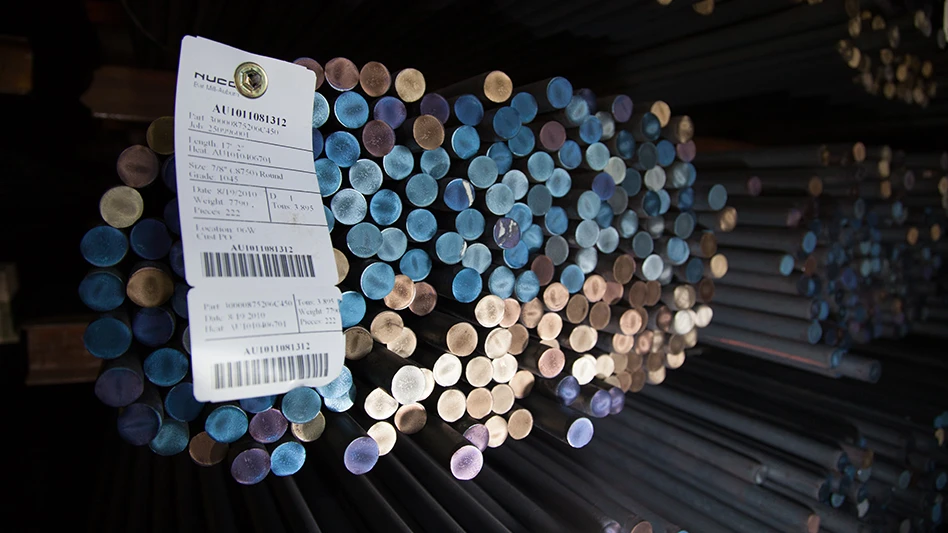
The metal can has long been a standby in our pantries and refrigerators. While many consumers say they feel the containers offer convenience and security, they also recognize the inherent recyclability of steel and aluminum. What consumers may not know, however, is that metal cans also offer energy efficiency and cost savings to food and beverage companies.
With many consumers concerned about the environmental values of the packaging they select, food and beverage packagers are also learning the importance of offering environmentally friendly packaging materials that can be readily recycled. A recent report from the Washington-based Can Manufacturers Institute (CMI) titled "Challenges and Consumer Demands Influencing the U.S. Packaging Market," examines the environmental benefits of metal cans. (The entire report is available online at www.cancentral.com.)
ENERGY EFFICIENCY.
The CMI report cites a study conducted by the Steel Recycling Institute (SRI), Pittsburgh, in July of 2005, that concludes that "canned foods offer a more energy efficient delivery system than either refrigerated or frozen food." Because canned foods do not rely on refrigeration to keep them fresh, chemical refrigerants such as hydrochloroflourocarbons are not a concern.The SRI study (available online at www.steel.org), performed by Scientific Certification Systems (SCS) of Oakland, Calif., analyzed the energy consumption of refrigerated, frozen and canned food delivery systems, quantifying the energy requirements at every stage depending on the packaging used. The study concluded that the production and delivery of frozen foods consumes at least 50 percent more energy than that of canned foods, while refrigerated food production uses between 1 percent and 5 percent more energy that that of canned.
| Tracking the Trends |
|
Consumer packaging research from the Aluminum Association and the Can Manufacturers Institute was offered as part of a presentation titled "Innovations and New Markets in Aluminum Beverage Containers" at PackExpo, a packaging industry tradeshow held in Las Vegas in the fall of 2005. According to the session, which included presentations from Craig Covert, manager of marketing and communications for Alcoa Inc., and Jim Fisher, vice president of packaging industry affairs for Ball Corp.: • Cans accounted for 62 percent of container unit shipments in 2002, far ahead of plastic at 17 percent and glass at 21 percent. • Within the grocery, drug and mass-merchandiser package mix, cans represent 75 percent followed by plastic at 23.5 percent. • The aluminum beverage can consistently rated higher than the plastic bottle, its chief competitor, in perceived convenience, recyclability and economics. • Among all consumers, 66 percent recycle aluminum cans 75 percent to 100 percent of the time, compared to 52 percent for plastic containers, 48 percent for newspapers and 44 percent for glass bottles. "Aluminum beverage cans provide the opportunity for advancement in the packaging industry," Ball Corp.’s Fisher said during the presentation. "Consumers and customers realize the value of the aluminum can and continue to drive a steady overall growth in the beverage industry." |
"Bottom line, the most efficient, convenient and nutritional delivery system of food to a dinner table is brought to the consumer though metal cans," Bill Heenan, SRI president is quoted as saying in the CMI packaging trends report. "Now we know that in addition to being the most recycled food packaging, cans are also a way for us to reduce greenhouse gases."
According to the CMI report, the aluminum can has also been contributing to a sustainable environment by being a recycling leader for more than 20 years. "Demonstrating recycling at its finest, the aluminum can is 100-percent recyclable into new beverage cans in as little as 60 days limitlessly." The report adds, "Fifty percent of the aluminum can is created from recycled cans—true closed-loop recycling."
The energy savings from recycling aluminum cans amounts to the equivalent of more than 15 million barrels of oil, according to the CMI report. "Reclaimed aluminum requires 95 percent less energy, generates 95 percent less emissions…and creates 97 percent less water pollution than producing new metal from ore," the report reads.
These energy savings are not unique to aluminum, but are also seen in steel manufacturing. Production of steel from recycled cans uses 75 percent less energy than steel produced from raw materials, according to the CMI report.
Innovations, such as lightweighting, have further improved the economic and energy efficiency of the can. "Since the 1970s, aluminum can weight has dropped from 55 pounds per thousand to 29.5 pounds per thousand today," according to the CMI. "Engineering has created new features like geometric optimization of the metal in the can walls, allowing the container to deliver its product using the least amount of materials. This also has led to improved cost competitiveness and enhanced unit market growth opportunities."
Metal cans not only provide an environmental advantage, they also provide an economic advantage, the CMI report asserts.
ECONOMIC ADVANTAGES.
"Generally, packaging companies are facing higher raw material costs and new competition," according to the CMI report. Innovations, such as easy-open cans with pull-tab lids, those with resealable lids and self-heating steel cans, could provide the steel packaging industry with "the cost-effective boost they need to overcome cost challenges," according to the CMI.The report cites a study by Business Research Group Inc., which examined the economics of food packing, finding that "production costs for metal cans used in food packaging are about 10 percent to 15 percent less than similar costs for retort pouches, a factor that greatly impacts the economic landscape for food processors."
According to the CMI report, can filling and sealing lines use in-line quality control inspection, while pouch packaging requires off-line quality control inspection, limiting the number of pouches that can be examined. Additionally, in the case of 10- and 16-ounce packages, retort packaging production costs are 45 percent to 65 percent higher on average than those of metal cans.
The CMI study concludes that the packaging industry is in the "midst of dynamic change," with consumer demands propelling innovations in metal can packaging.
"Increasingly convenient packaging methods and rising recycling rates have highlighted the new focus of the can industry: improving the ease of consumers’ lives and protecting the environment around them," the report states.
The author is managing editor of Recycling Today and can be reached at dtoto@gie.net.

Explore the January 2006 Issue
Check out more from this issue and find your next story to read.
Latest from Recycling Today
- Indiana county awarded $65K recycling grant
- Mixed paper, OCC prices end year on downward trend
- Updated: CAA submits final draft program plan in Oregon
- Enviri names new president of Harsco Environmental business
- Survey outlines ‘monumental challenge’ of plastic packaging collection in UK
- Nippon Steel acknowledges delay in US Steel acquisition attempt
- BASF collaborates to study mechanical plastic recycling
- Commentary: navigating shipping regulations for end-of-life and damaged batteries





